
Students examine the impact of digital technology on print journalism and develop creative ideas for delivering news
- Provider:
- New York Times
- Author:
- The New York Times Learning Network
- Date Added:
- 06/24/2019

Students examine the impact of digital technology on print journalism and develop creative ideas for delivering news

In this lesson, students examine the impact of digital technology on print journalism and develop creative ideas for delivering news

This four-week unit focuses on the theme of nostalgia. Students will study several genres of literature (poetry, nonfiction, fiction) and write informal and formal analytical commentaries. Students will also do writing about their own childhood memories.
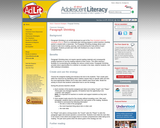
The Paragraph Shrinking strategy allows each student to take turns reading, pausing, and summarizing the main points of each paragraph. Students provide each other with feedback as a way to monitor comprehension.

Students will watch and discuss video clips that show how two men in Chile coped with being prisoners in concentration camps during the dictatorship of Augusto Pinochet. Each student will then create a non-fiction picture book that tells the story of one of these men and provides historical context.
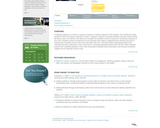
This resource provides a lesson whereupon students will use their knowledge of the character Holden from the novel Catcher in the Rye to create a fictitous playlist. Students must defend their choices for songs using evidence from the text.
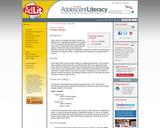
Power Notes is a strategy that teaches students an efficient form of organizing information from assigned text. This technique provides students a systematic way to look for relationships within material they are reading. Power Notes help visually display the differences between main ideas and supportive information in outline form. Main ideas or categories are assigned a power 1 rating. Details and examples are assigned power 2s, 3s, or 4s.
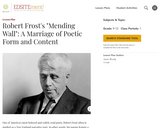
Studying Robert Frost's "Mending Wall," students explore the intricate relationship between a poem's form and its content.
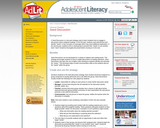
A Seed Discussion is a two-part strategy used to teach students how to engage in discussions about assigned readings. In the first part, students read selected text and identify "seeds" or key concepts of a passage which may need additional explanation. In the second part, students work in small groups to present their "seeds" to one another. Each "seed" should be thoroughly discussed before moving on to the next.

Students examine the state of the print newspaper industry, then debate its future.

In this lesson, students examine the state of the print newspaper industry, then debate its future.

This resource provides a lesson pertaining to a close reading of "A Long Thin Line". Students will complete an analysis using a graphic organizer, review the article using the SOAPStone method and finally repsond to the work in the form of a freestyle writing.
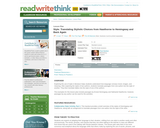
Exploring the use of style in literature helps students understand how language conveys mood, images, and meaning. After exploring the styles of two authors, students will translate passages from one author into the style of another. Then they will translate fables into style of one of the authors.

In this video, students explore the use of supernatural elements within William Shakespeare’s plays, focusing particularly on Macbeth, Hamlet, and The Tempest. Students examine supernatural beliefs during the 16th and 17th centuries, and they also identify how supernatural elements drive the plot of many of Shakespeare’s plays.

Students explore the commercial roots of the American Dream and analyze a historical or literary text that supports this philosophy in conversation with an Op-Ed column.

In this lesson, students explore the commercial roots of the American Dream and analyze a historical or literary text that supports this philosophy in conversation with an Op-Ed column.

This lesson, which can be adapted to multiple texts, has students complete literature circles as the final activity in a novel centered around The Great Gatsby.
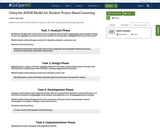
Students can use the ADDIE Model Template to plan their project-based learning assignment.
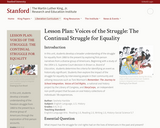
In this unit from the Standford University The Martin Luther King, Jr. Research and Education Institute students develop a broader understanding of the struggle for equality from 1868 to the present by exploring first-person narratives from a diverse group of Americans. Beginning with a study of the 1954 U.S. Supreme Court decision in Brown vs. Board of Education, students determine the criteria for identifying an event as historically significant. Students then explore the impact of the struggle for equality by interviewing people in their community and utilizing resources such as Toni Morrison’s Remember: The Journey to School Integration, Voices of Civil Rights, a national oral history project by the Library of Congress, and StoryCorps, an independent non-profit project that focuses on oral history collections of individuals’ life experiences.

Students will read, critically analyze and write about a series of poems dealing with 'songs about the American experience."